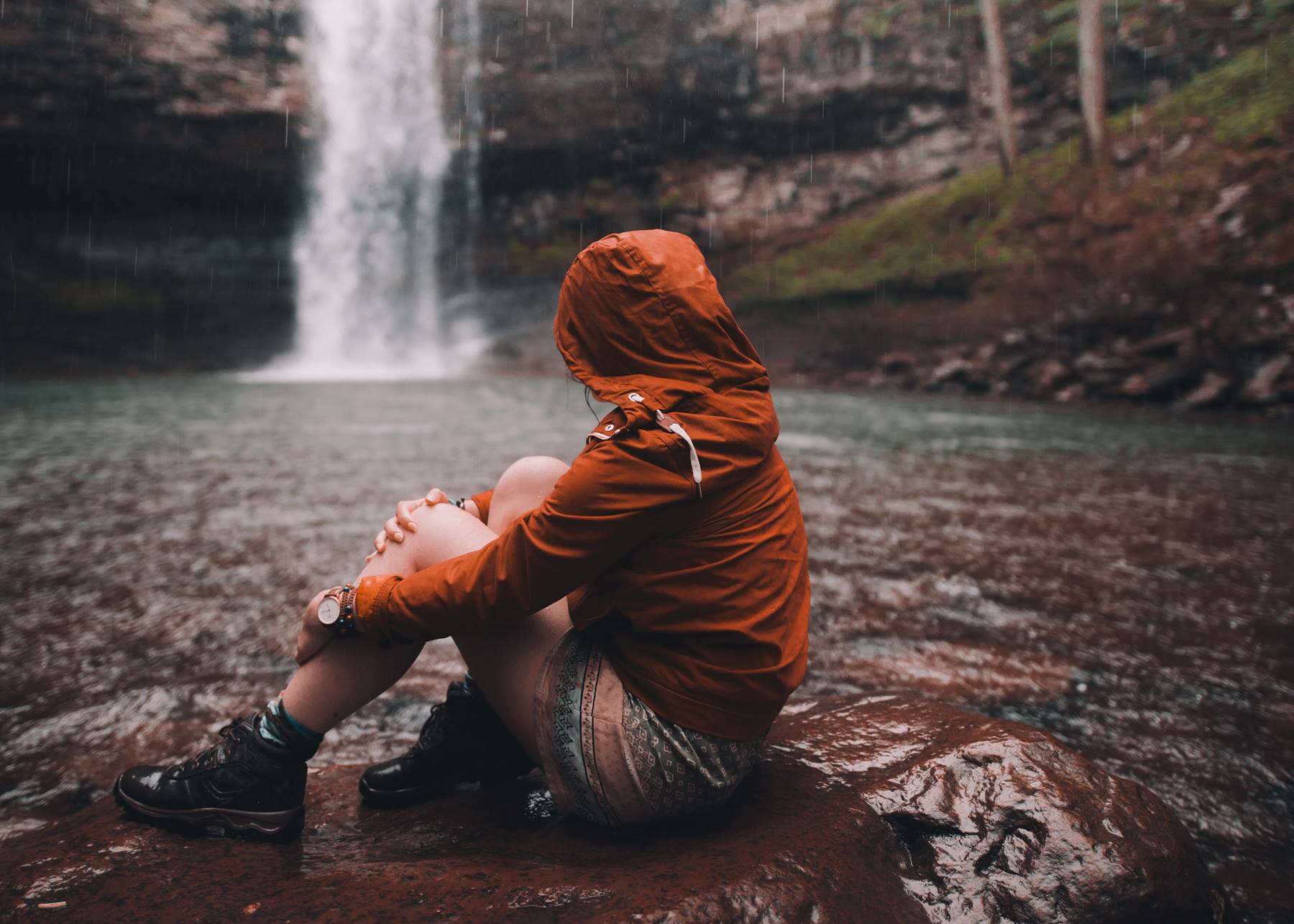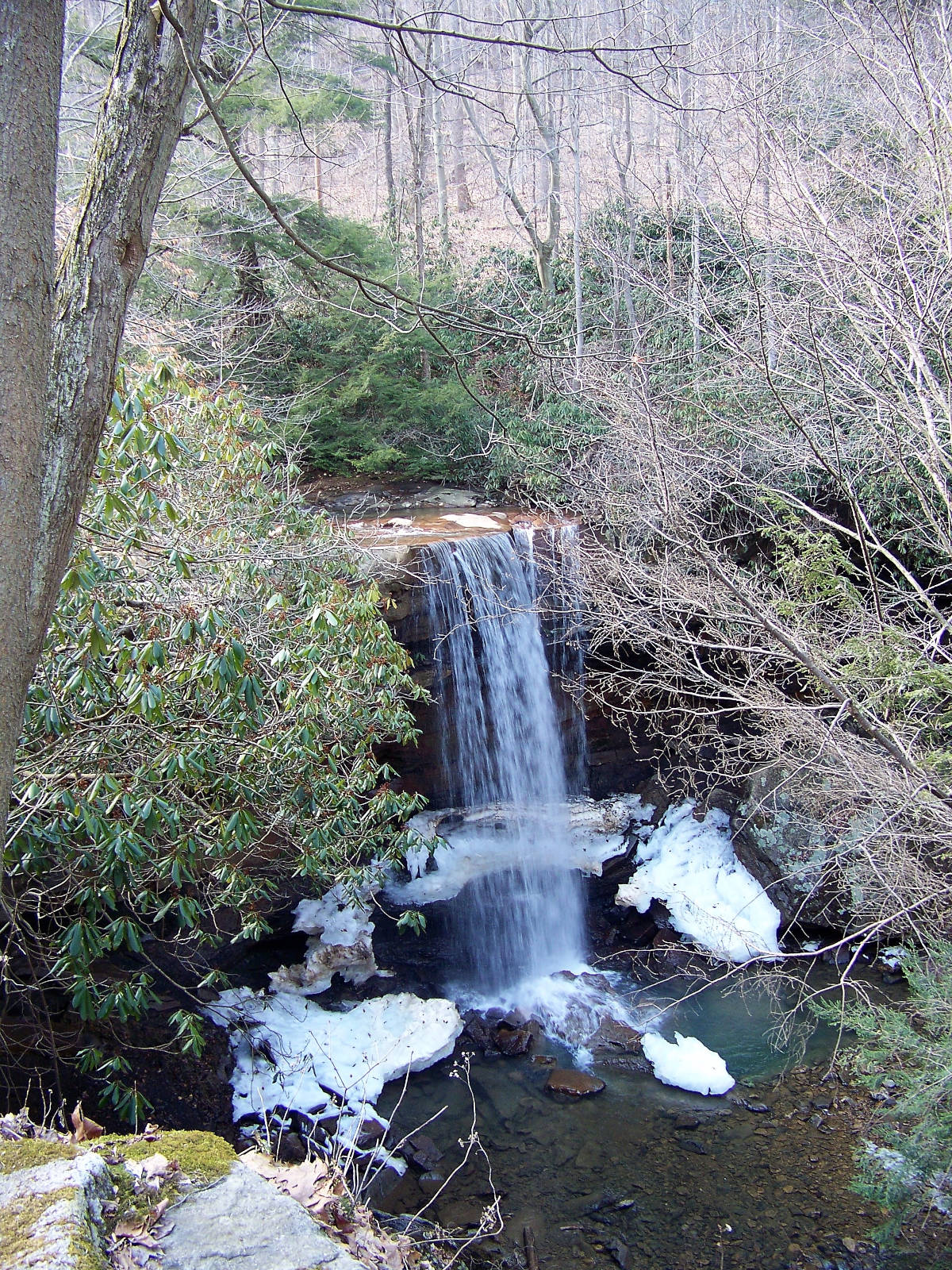Winter has released its cold grasp on the world, the rivers and streams have begun to thaw, and pink buds are starting to dot the outstretched tree limbs. Spring is an awakening of life, a return of warmth, and the beginning of longer days.

Spring is also one of the best times of the year for hiking. Longer days mean plenty of daylight, and while the days are warm, the mornings and the evenings are still cool, like the other side of the pillow.
While every season poses its own outdoor concerns, I’ll walk you through what to wear hiking in spring so you can take in the spectacular sites in comfort!
Varying Climates
Spring means a general warming of climates around the country, but it will vary to different degrees depending on where you live.
In the western mountainous regions, there will still be snow up high on mountain passes, and hiking at high altitudes will mean dealing with snow and ice on trails.
This primarily correlates to the Northwest, mountainous regions, and high up in the Northeast. Snow and ice won’t be a major issue in the South and East because even the mountains are located at a lower elevation.
Also, spring brings rainfall to many parts of the country, so you’ll need to pack and dress accordingly. The best thing to do is to check the weather report before you set out on your hike.
Northwest
It’s preferable to be over prepared than underprepared because the weather in the Northwest is frequently unpredictable.
On average, the region experiences 2-3 inches of rain each month throughout the spring, with temperatures averaging between 45 and 55 degrees Fahrenheit.
West (Mountains)
Similar to the Northwest, springtime temperatures in mountainous areas are often lower than elsewhere, ranging between 40 and 50 degrees Fahrenheit – or lower – depending on elevation.
Keep in mind that the temperatures will decrease as you reach higher elevations. Fortunately, the West is relatively dry in the spring, with only 1-2 inches of rain falling on average.

Northeast
The climate in the Northeast varies greatly. Maine’s northernmost point will be considerably colder than the more southern areas, frequently below freezing. Closer to the coast, though, the temperatures will be warmer.
Average temperatures in the southernmost part of the Northeast range from 40 to 55 degrees Fahrenheit. With moderate precipitation between 3 and 4 inches each month, springtime can be pretty rainy.

East
With highs between 50 and 60 degrees Fahrenheit, the eastern United States enjoys an amazingly temperate spring. However, the East can experience heavy precipitation this time of year, an average of 3-5 inches.
South
The springtime temperatures in the South are the warmest, reaching between 60 and 70 degrees Fahrenheit on average, though they can get much hotter during warm spells.
The South also receives a good amount of rain in the spring, typically between 4 and 6 inches.
Although spring is one of the most beautiful seasons for hiking due to the blossoming trees and flowers, it can also be one of the wettest in many places, so one of your primary packing considerations is rain protection.
However, it’s not just about what you wear, you’re going to need a waterproof cover for your pack, as well.
Rain Gear Checklist
- Rain jacket: A waterproof, breathable jacket with pit zips is recommended. Gore-Tex is one of the most common names, but some companies have designed their own proprietary waterproof materials.
- Rain pants: Like your jacket, look for a lightweight pair of waterproof, breathable rain pants. Breathability isn’t as crucial on your lower half, but it’s something to consider when shopping, depending on your climate.
- Waterproof hiking shoes or boots: For spring hikes, you should wear comfortable shoes or boots with a waterproof breathable membrane (that link goes to our picks of the best lightweight and waterproof shoes), such as Gore-Tex. You can also check out our beginner hiking shoe article for other great options.
- Waterproof backpack cover (or waterproof backpack, such as one made from Dyneema material): Most backpacks aren’t waterproof, so you’ll need a waterproof backpack cover to protect the gear in your pack from getting wet during a downpour. There are some exceptions, including backpacks made from the cutting edge, stronger-than-steel material, Dyneema.
- Lightweight umbrella: While this might seem ridiculous to some, carrying an umbrella while you’re hiking in springtime is quite trendy. If you are planning any thru-hikes in wet climates, an umbrella just may end up being your best friend.
Spring Hiking Clothes
Spring is similar to fall in that although you will experience warmer weather during the daytime, the mornings and evenings will likely be cool.
But, again, this depends on the climate and whether it’s early spring or nearing summer. Always check the weather before setting out on a hike.
Here are a few tips to get you started.
Pro tip: Layering is essential. Proper layering keeps you warm when it’s cool and allows you to shed clothing when temperatures get too hot. You can review the importance of layering in our hiking in fall article.
Undergarments
Your socks and underwear should be warm and comfortable above all else. Lose the cotton!
Cotton absorbs water, is slow to dry, and in extreme cases, can result in hypothermia. Merino wool and synthetic blends are the best types of fabric for hiking.
Base Layers
If you start hiking in the morning or live in a cooler climate, you’ll likely want to wear long underwear underneath your hiking pants.
Again, merino wool and technical synthetic blends are your best option. Merino wool stays warm when wet and repels odors, while synthetic blends add durability.
For cooler climates, merino wool is the best choice. On your top half, select either a long-sleeve base layer or a t-shirt, depending on the temperature.
Remember, you can always shed layers on your hike, but it’s important that your base layers are made of moisture-wicking, breathable fabric, as these are worn directly against your skin.
Pro tip: Baselayers have different weights. Heavier-weight baselayers are made for cooler temperatures, and lighter-weight baselayers are designed for warm weather.
Mid Layers
Think of your mid-layer as your insulation, designed to keep you warm when the temperatures drop or during cooler springs.
The best middle layers are polyester fleece jackets or synthetic hoodies. Again, stay clear of the cotton.
Pro tip: Ditch the traditional hoodie. Most hoodies are made of cotton and will retain water and become heavy when wet. Instead, opt for a technical synthetic hoodie.
Outer Insulation
If it’s cold outside, such as in the early morning, late afternoon, high elevation regions or northernmost parts of the country, you’ll want to bundle up.
But you’ll also want something lightweight and compact so that if it warms up and you need to stow it in your pack, it will compress and pack away nicely.
This is where your choice of an outer insulating layer comes into play.
Pro tip: Down is the best lightweight insulator, as long as it’s not exposed to moisture. In wet regions, synthetic down is recommended.
Your heavier insulation should comprise a down or synthetic-down vest or jacket. It’s helpful to own one of both if you live in a changing climate. Down is extremely packable and will tuck easily into your backpack when you’re not wearing it.
Synthetic alternatives are not as compressible but will be appreciated in wet conditions as they provide some water resistance and retain warmth when wet.
As spring gives way to summer, you can probably put your coat in the closet until late fall.
Hiking Pants or Shorts
Whether you wear hiking pants or shorts comes down to personal preference and the weather.
Long pants are recommended as they provide a barrier between your legs and contact with plant and animal life in addition to UV rays. But as the temperatures begin to warm up, such as down south and in late spring, you may opt for a pair of hiking shorts.
Pro tip: If you wear shorts, choose high-top hiking boots over shoes to provide your ankles with some protection from trail obstacles and plant life.
In the Northwest, western mountains, and the northernmost tip of the Northeast, spring will feature cold enough temperatures to require a baselayer bottom in addition to your hiking pants.
If you know you’ll be layering, select a pair of stretch-woven hiking pants. If you’re going to wear hiking pants by themselves, any kind of soft-shell pants are ideal.
Hiking-specific pants offer a level of water resistance, and while they won’t do you much good in a downpour, they will protect you from getting wet in light rain or while traipsing through puddles.
Outer Layer
Your outer layer is your primary line of protection from the wind and rain. We’ve already gone over our rain gear checklist, so we’ll use this section primarily as a placeholder for an optional wind shell.
If you’re hiking in dry conditions, you might opt for a more breathable light jacket instead of something waterproof.
While most climates necessitate packing a rain jacket for spring hiking, you don’t have to wear it if it’s not raining. A wind shell is much more breathable and will keep you more comfortable overall.
Pro tip: Carry both a rain jacket and a wind jacket, and pack the one you’re not wearing.
Layering for Spring Hikes
Cold Temperatures: Wool underwear and socks, a midweight polyester or merino wool long underwear top and bottom, a synthetic midlayer, a down jacket or vest, breathable waterproof jacket and long pants
Warm Temperatures: Wool underwear and socks, a short-sleeve synthetic or merino wool tee, synthetic hiking pants or shorts (convertible if you prefer), a lightweight wind shell, a rain jacket or poncho, and pants
Pro tip: Always pack waterproof gear in spring! See our checklist above.
Other Spring Hiking Gear Essentials
Don’t forget the rest of the equipment to enjoy this beautiful time outside now that you are equipped with the ideal hiking attire for your Spring adventures.
- No matter what, any time you head out in nature, PLEASE take a first-aid kit! Even if it is nothing more than some band aids, gauze and blister pads.
- I don’t want you getting lost on the trail so make sure to bring along a compass and map if you are old-school or at the very least have them on your smartphone.
- With all the extra sunshine beaming down you’ll want to have your sunglasses handy. Plus it never hurts to have some zinc oxide sunscreen with you to protect any exposed skin.
- You should always pack some snacks, like a banana or energy bar, to help replace the calories you will be burning. If you have enough room, why not bring lunch to fuel up on in one of the many scenic spots you will no doubt come across.
- Spring is one of the prime hiking seasons in many places worldwide, not to mention one of the most photogenic times of the year, so don’t leave your camera behind!
- This last item is one most people would leave behind at home, but anymore I never hit the trails without my trusty binoculars. Even though the zoom lens on my camera does a good job picking things up far away, my binocs strap in front of my chest and are easy to access if I want to quickly identify a bird or other wildlife in the distance.
Wrapping It Up…
The snowcapped peaks recede, and green grass returns to the once barren, brown landscape. The fresh air of Springtime, along with the white clouds and blue sky, give new life to the wildflowers blooming before your eyes.
Animals leave their dens behind for the lively fields and the forests. It’s time to end your own winter hibernation and return to the sanctuary of nature.
So stretch your legs, get your spring hiking clothes on, step out the door, and yell “Hello Trail!” and get moving.
